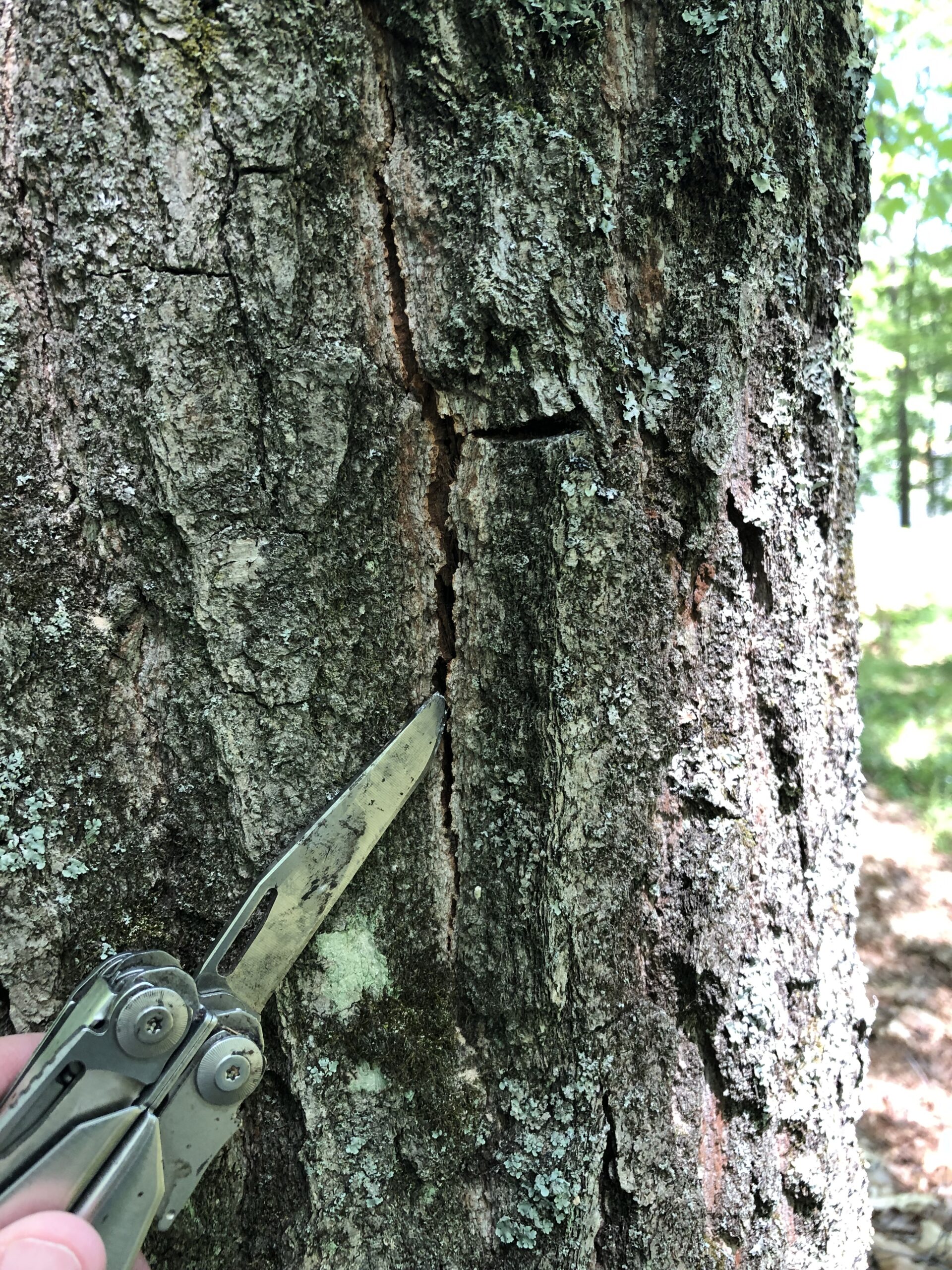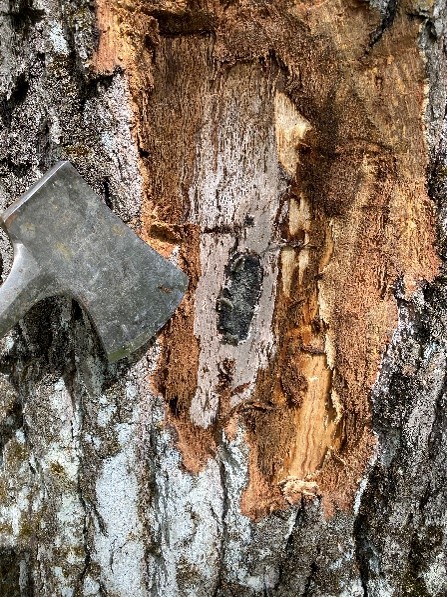By Linda Williams, DNR Forest Health Specialist, Woodruff
Linda.Williams@wisconsin.gov, 920-360-0665
Have you ever seen an oak wilt fruiting body? Oak wilt is a fungal disease that kills trees in the red oak group (northern red oak, northern pin oak, black oak and other oaks with points on their leaves). Trees in the white oak group (white oak, burr oak, swamp white oak and other oaks with rounded leaves) are more resistant to the disease, but branches or branch tips can still be killed.

Oak wilt pressure pads can create a crack in the bark, allowing beetles to get into the spores. Photo: Wisconsin DNR
When a tree in the red oak group dies from oak wilt, the fungus will fruit once or grow spore-producing structures after it kills the tree. The fruiting bodies grow under the bark, forming a pressure pad that cracks the bark. This cracking allows beetles to feed on the fungus inside the tree, at which time they also become covered in spores and spread the fungus to other trees.
Fruiting bodies aren’t typically obvious unless you know how to look for them. You may need to look closely to see a narrow crack in the bark or tap the bark with a hatchet to listen for a hollow area. The bark will be loose there and peeling it back will expose the dark grey pressure pad and lighter grey fungal material surrounding it. A large pressure pad can be 1×4” and ¼-½” thick. They can form anywhere under the bark and will produce spores for a few weeks before drying up. After that, the fungus will not create any more fruiting bodies on that tree.
Occasionally a tree that died from oak wilt in early spring will create fruiting bodies in the fall, but most form in the spring. The presence of fruiting bodies and beetles in the spring and early summer is why the high-risk period for overland oak wilt transmission occurs from April 1 – July 15 in Southern Wisconsin and from April 15 – July 15 in Northern Wisconsin. The summer heat causes both to subside, and the risk of overland spread is greatly decreased by late July.

Peeling the bark where a crack was present shows a dark pressure pad surrounded by lighter-colored fungal material. Photo: Wisconsin DNR

